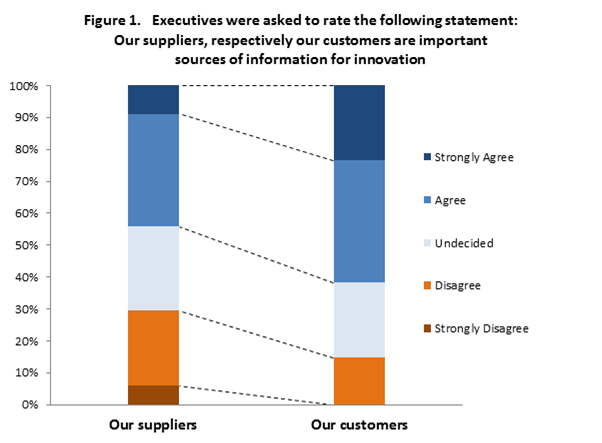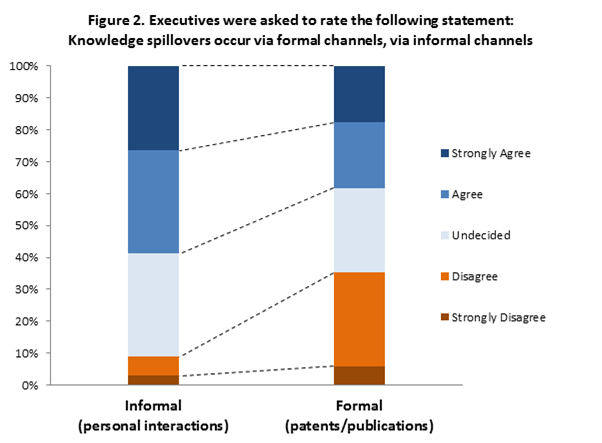Do you collaborate with and learn from your suppliers, or are you serving them the knowledge to compete with you head-on on a silver platter? This question is increasingly relevant in today’s global competitive environment. Firms are routinely leveraging global sourcing to gain cost advantages but competition nowadays occurs between supply chains, rather than businesses. Thus keeping an eye on your supplier’s ambitions is vital.
Case in point, just look at the ongoing patent infringement lawsuits between Apple Inc. and Samsung Electronics Co. Apple turned to Samsung as a supplier for its new iPod and iPhone products back in 2005. At first the two companies jointly developed the components, which gave Samsung an insight into Apple’s technology and operations. Being the only supplier for the processors, Samsung also gained critical knowledge on Apple’s prediction of the market size for the iPhone. In 2010, Samsung launched its own smart phone and has since become Apple’s largest competitor. Today, Apple still remains dependent on Samsung, but it is trying hard to diversify its supplier portfolio.
The above situation exemplifies the negative aspects of knowledge spillovers in the supply chain—i.e. how important knowledge that exceeds the scope of the formal transaction can be diffused between customers and suppliers, and then be used in a rivalrous manner. At the same time, spillovers can also have positive effects and lead to a competitive advantage for the supply chain as a whole.
How does your desire to draw on trading partners for innovation balance with the need to protect strategic knowledge? And, to what extent do you take co-competition from suppliers into account in your supplier assessments? We engaged 34 executives from different high-tech firms and asked them about their opinion. Their consensus: recognizing knowledge spillovers is a critical issue in today’s supply chains. Both suppliers and customers are seen as important sources of information for innovation (see Fig 1).
“We get plenty of valuable information about the market, its players in the value chain and its main drivers from our customers and suppliers. My business relies on it. It is a great input for our R&D portfolio,” said Dr. Ir. Kees Joziasse, Director of Innovation at Corbion Purac.

While most high tech firms protect their innovations through patents, most of the executives stress that knowledge spillovers occur outside formal collaborations—to a large extent via personal interactions between employees of the firms (Figure 2).

Greg Nelson, Sr. Director R&D LED Systems at Philips highlights that employees possessing important knowledge must be conscious of the risks and rewards of knowledge spillovers when interacting outside the firm:
“Knowledge spillovers in the supply chain are a clear attention point. There is a need to create awareness up front with people who have these contacts and to have an explicit policy regarding what can be transferred. Policy restrictions must be balanced with the potential benefits that can be derived from collaboration and not hinder speed in the process. While policies and procedures are not always 100% effective, they do help create awareness in the organization to guard against unintended transfers.”
The Supplier Perspective
While a supplier can learn from its customers, it cannot choose who wants to buy its products/services. Still, Ted Smith, EMEA Sales Director at ON Semiconductor suggests that firms can leverage knowledge spillovers and gain a competitive advantage by carefully choosing collaboration/innovation partners.
“We typically don't select which customers to do business, but we do select customers to innovate with. We work with selected alpha-customers, or early adopters, who support supplier innovation in return for a head start in the market.”
The Supply Chain Perspective
Good and enduring partnerships can lead to a competitive advantage for the supply chain as a whole: Mukesh Singh, Senior Regional Manager at BASF explains that “Suppliers easily share their new learning/knowledge if the customer has a strong supplier relationship management program.”
However, it is important to agree upfront how innovative output that is generated in a collaboration should be divided. Dan Negrea, Managing Director AEMtec GmbH and Chief Technology Officer at ECMS exceet, elaborates:
“We strictly consider the background and foreground intellectual property (IP) in our cooperation with partners. The background IP is a source of information "for free." The foreground IP is normally shared between our company and the customers. Product related IP goes to the customer and process related IP stays with us. In most cases, cutting edge products require the parallel development of a product and a manufacturing process.”
The Customer Perspective
Most executives viewed knowledge spillover as a positive phenomenon. Reflecting on the Apple-Samsung example, others might beg to disagree. Managers do need to protect important knowledge from potential competitors and patents offer only limited protection. Thus, strategic supplier assessments and a detailed supply chain contract are vital to mitigate this risk. If the knowledge in question is critical, in-house production or vertical integration of the supplier might still outweigh short-term gains.
Takeaways
Knowledge spillover readily occurs in your supply chain. Managers need to be aware of the risks of negative leaks, which can have detrimental consequences for the firm. At the same time, knowledge spillover can offer significant benefits for your supply chain if suppliers leverage newly acquired competences to your advantage. These are our recommendations:
· Explicitly recognize the potential of knowledge spillovers in collaboration and sourcing decisions up-front! What do you need to protect from your competitors? Are there limitations in your supply chain contract? To what extent can your enforce non-use, non-disclosure and non-competition clauses in a global marketplace?
· People buy from people. Make sure that employees are aware of the risks and benefits of knowledge spillovers! Create an appropriate policy regarding disclosures and interactions outside the firm!
· Have a clear strategy with regards to each supply chain partner! Do you want a win-win situation or to squeeze a supplier? In collaborations, clearly agree upfront how innovative output shall be divided! If the knowledge is strategically important, in-house production or vertical integration of the supplier might be the safer option.
Contributed by: Ralf W. Seifert, Professor of Operations Management at IMD and he teaches in the Leading the Global Supply Chain (LGSC) program & Olov Isaksson, a PhD candidate at the Chair of Technology and Operations Management at EPFL, specializing in buyer-supplier relationships.